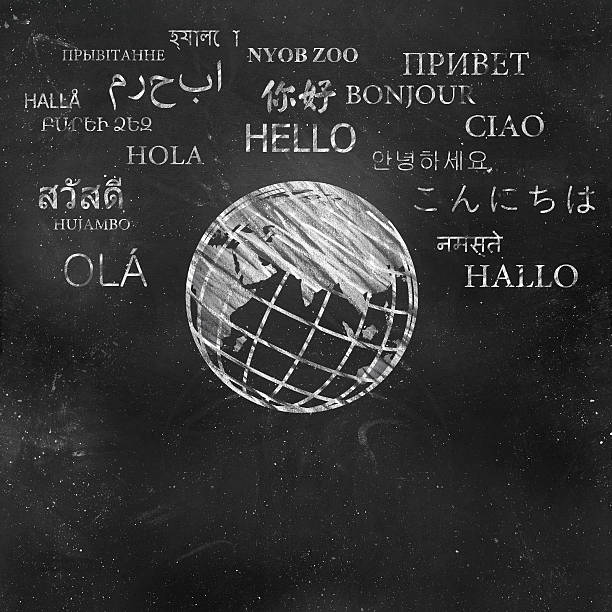In an era of unprecedented global connectivity, the exchange of ideas and innovations is at an all-time high. However, as businesses and individuals engage in cross-border collaborations, the impact of language barriers on international intellectual property (IP) cannot be overstated. Language serves as both a conduit for communication and a barrier that can impede the effective protection and enforcement of intellectual property rights across borders. In this blog, we will delve into the multifaceted ways in which language barriers influence international IP, exploring the challenges faced, the legal landscape, and potential solutions to bridge this linguistic divide.

The Role of Language in Intellectual Property
Language is the bedrock of human communication, and in the realm of intellectual property, effective communication is vital for the protection and enforcement of rights. IP, encompassing patents, trademarks, copyrights, and trade secrets, relies on clear and unambiguous language to delineate the scope and limitations of legal protections. When parties from different linguistic backgrounds engage in IP-related transactions, the potential for misunderstandings, misinterpretations, and conflicts escalates.
1. Patents and Technical Language Barriers
Patents, often regarded as the cornerstone of innovation protection, present unique challenges when it comes to language barriers. The drafting of patent applications requires precise technical language to accurately describe inventions. When patent applications are submitted in multiple languages, disparities in terminology and nuance can arise, leading to inconsistent interpretations and potential vulnerabilities. This can result in difficulties during examination procedures, making it essential for inventors and patent professionals to navigate the intricacies of multilingual patent systems.
2. Trademarks and Brand Identity Across Borders
In the world of trademarks, establishing a consistent brand identity across international markets is crucial for businesses seeking to expand globally. Language barriers pose challenges in the selection and protection of trademarks, as words or phrases that are innocuous or positive in one language may carry negative connotations in another. The need for comprehensive linguistic and cultural evaluations when developing and protecting trademarks becomes evident, emphasizing the importance of linguistic expertise in the global trademark landscape.
3. Copyright and the Challenge of Translations
Copyright protection extends to original literary, artistic, and creative works. In a globalized digital environment, where content is disseminated across linguistic and cultural boundaries, the issue of translations becomes paramount. Language barriers may lead to unauthorized translations, raising questions about the enforcement of copyright across diverse linguistic landscapes. Additionally, navigating international copyright treaties and agreements requires a nuanced understanding of legal terminology, which can be impeded by language differences.
4. Trade Secrets and the Need for Confidentiality
Trade secrets, which often underpin a company’s competitive advantage, rely on the effective communication of confidential information within an organization. When dealing with international collaborations or business transactions, language barriers can jeopardize the confidentiality of trade secrets. Miscommunications or misunderstandings may lead to unintentional disclosures, highlighting the need for robust strategies to protect sensitive information in a linguistically diverse environment.
The Legal Landscape: International Treaties and Agreements
To address the challenges posed by language barriers in the realm of intellectual property, various international treaties and agreements have been established. These instruments aim to harmonize IP laws and facilitate cross-border cooperation, but their effectiveness depends on the degree to which language barriers are mitigated.
1. The Paris Convention for the Protection of Industrial Property
The Paris Convention, signed in 1883, is one of the oldest international treaties addressing IP issues. It establishes the principle of priority rights for patents and trademarks, allowing applicants to claim the priority date of their first filing in one member country when filing subsequent applications in other member countries. While the Paris Convention promotes international cooperation, the lack of a standardized language for patent filings remains a challenge.
2. The Patent Cooperation Treaty (PCT)
The PCT, administered by the World Intellectual Property Organization (WIPO), simplifies the process of filing patent applications in multiple countries. It provides a centralized filing procedure and a search report that facilitates the examination process in individual member countries. However, the PCT does not standardize the language of patent applications, leaving room for linguistic disparities during the national phase.
3. The Madrid System for the International Registration of Trademarks
For trademarks, the Madrid System offers a centralized mechanism for the international registration of marks. Administered by the International Bureau of WIPO, the system allows trademark owners to protect their marks in multiple member countries through a single application. However, linguistic challenges persist, as the Madrid System does not mandate the use of a single language for trademark applications.
4. The Berne Convention for the Protection of Literary and Artistic Works
The Berne Convention, governing international copyright protection, establishes minimum standards for the protection of literary and artistic works. While it provides a framework for cross-border recognition of copyright, the convention does not address language barriers directly. As a result, the interpretation and enforcement of copyright may vary across linguistic jurisdictions.
Challenges in Enforcement and Litigation
Enforcing intellectual property rights in a global context requires effective communication not only between IP professionals but also within legal systems that may operate in different languages. Language barriers can significantly impact the enforcement and litigation of IP rights, leading to delays, increased costs, and potential inequities.
1. Legal Proceedings and the Role of Translations
In legal proceedings involving IP disputes, accurate translations of documents, including patents, trademarks, and contracts, are essential. The quality of translations can influence the outcome of cases, as misinterpretations or linguistic nuances may lead to different legal conclusions. The reliance on translators who may not possess the necessary technical or legal expertise further complicates the issue.
2. Cross-Border Collaboration and Communication
International collaborations in research and development, technology transfer, and joint ventures require seamless communication to navigate complex IP landscapes. Language barriers can impede effective negotiations, jeopardizing the success of collaborations and hindering the transfer of valuable intellectual assets. Clear and precise agreements are essential, necessitating the involvement of legal professionals with linguistic expertise.
3. Differing Legal Interpretations Across Jurisdictions
The interpretation of IP laws may vary across jurisdictions, and language plays a pivotal role in shaping legal arguments and outcomes. Ambiguities or inconsistencies in legal texts may lead to different interpretations by courts in different countries. This lack of uniformity can create uncertainty for IP owners seeking consistent protection and enforcement of their rights globally.

Mitigating the Impact: Strategies and Solutions
While language barriers in international intellectual property present significant challenges, several strategies and solutions can help mitigate their impact. These approaches encompass legal, technological, and procedural measures aimed at fostering effective communication and collaboration across linguistic boundaries.
1. Standardization of Patent Terminology
Efforts to standardize patent terminology across multiple languages could enhance the clarity and consistency of patent documents. The establishment of a standardized set of terms and definitions, possibly through international collaboration and consensus-building, would reduce the risk of misinterpretations during patent examination and litigation. Such standardization could be facilitated by organizations like WIPO in coordination with national patent offices.
2. Multilingual IP Education and Training
Promoting education and training programs that address the intersection of language and intellectual property is crucial. IP professionals, including patent examiners, trademark examiners, and legal practitioners, should receive training in cross-cultural communication and linguistic nuances. This would enhance their ability to navigate multilingual environments and contribute to the effective protection and enforcement of IP rights.
3. Technological Solutions for Translation and Communication
Advancements in machine translation and language processing technologies offer promising solutions to bridge language gaps in the field of intellectual property. Automated translation tools can assist in the translation of patent documents, legal texts, and other IP-related content. However, the accuracy and reliability of these tools must be continuously improved to meet the precision required in the field of IP.
4. Linguistic Due Diligence in IP Transactions
In the context of IP transactions, conducting linguistic due diligence is essential to identify and address potential language-related risks. This involves a thorough examination of the linguistic aspects of contracts, licenses, and other IP-related documents. Legal professionals with expertise in both IP law and the relevant languages can play a crucial role in ensuring that agreements are clear, unambiguous, and effectively convey the intended rights and obligations.
5. Collaboration and Harmonization Among IP Offices
International collaboration among intellectual property offices can contribute to the harmonization of procedures and the development of best practices. Collaboration platforms, such as the IP5 (a forum of the five largest intellectual property offices), provide a venue for sharing experiences and aligning practices. By working together, national and regional IP offices can contribute to the development of standardized practices that mitigate the impact of language barriers.
Conclusion
The impact of language barriers on international intellectual property is a multifaceted challenge that requires concerted efforts from stakeholders across the globe. As innovation and creativity continue to transcend borders, addressing linguistic challenges becomes imperative for the effective protection and enforcement of intellectual property rights.
While international treaties and agreements have laid the foundation for cross-border cooperation, there is room for further innovation and collaboration. Standardizing terminology, investing in linguistic education for IP professionals, leveraging technological solutions, and promoting international harmonization efforts are essential steps toward overcoming the linguistic hurdles that impede the seamless exchange of ideas and innovations on a global scale.
In the pursuit of a more inclusive and interconnected global intellectual property landscape, stakeholders must recognize the importance of language not only as a potential barrier but also as a bridge that, when properly navigated, can foster innovation, collaboration, and the equitable protection of intellectual property rights across diverse linguistic and cultural landscapes.

Leave a Reply